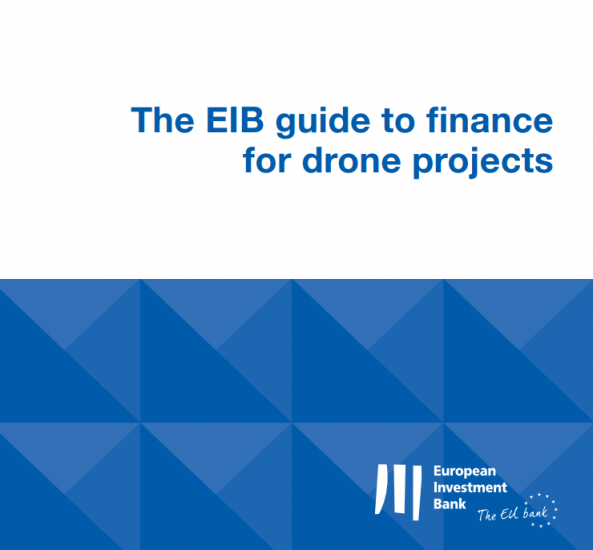The European Investment Bank (EIB) has published the Guide to Finance for Drone Projects and the UAM Market Assessment Report on its Advisory Hub website. The guidance is framed by the European Commission’s draft Drone Strategy 2.0 for Europe which is due publication in 4Q22.
It follows two recent EIB reports entitled A Market Assessment Report for the UAM Sector and Study on Societal Acceptance of UAM in Europe.
With demand surging, more innovation and investment are needed in the air mobility sector. Drones offer huge potential for the private and public sectors and can provide societies with an array of benefits, from lowering pollution in transport to offering emergency medical assistance and making agriculture more precise and efficient. In the next 20 years, the European Commission expects urban air mobility to create 150 000 to 200 000 jobs in the European Union alone. But growth in the sector will also bring many challenges.
According to the report, “further and new action is needed at EU level, as the air mobility sector is developing rapidly with new innovative ways of using drones emerging at a fast pace, requiring an assessment of the regulatory and enabling framework to ensure that these new services can thrive in the EU internal market. Related technologies such as radiofrequency communication, artificial intelligence (AI), advanced sensors and improvements in power sources are opening up new prospects. Drones are used as day-to-day tools in an increasingly broad range of data-demanding economic sectors such as agriculture, construction, surveillance, filming, healthcare, energy, environment, public safety and security. Future visions include the use of drones, for example, as platforms for communication hubs or weather or pollution monitoring. In the transport sector, the use of drones for deliveries is already being tested in many countries. The first pilot trials in passenger transport in Europe are expected to take place within the next few years.”
The guide provides information to help public and private sector promoters identify potential sources of finance at each stage of development. It also guides promoters in collecting and drafting the documentation needed to access finance. The guide helps promoters improve their funding options and make better decisions each step of the way. This will make their drone project investment more likely to succeed, and bring about climate benefits as well as positive economic and job creation impacts for the European Union. The guide was developed by European Investment Bank experts mobilised by the European Investment Advisory Hub, and by an external service provider.
The guide will:
- Provide promoters with a structured approach to assess project development, identify missing components and outline various sources of funding;
- Support the development of high-quality, efficient air mobility investment projects backed by a sound implementation plan;
- Help promoters prepare clearly defined requests for technical assistance and/or financing.
The guide answers questions such as:
- Where along the development cycle is the project situated?
- What steps need to be taken to move to the next step/complete the project?
- What financial support is available at each stage?
- When would the project be ready to move from grants or equity investments to applying for loans from the European Investment Bank and other institutions?
- What documentation/information is needed to apply for financing?
The report is available here
For more information visit:




